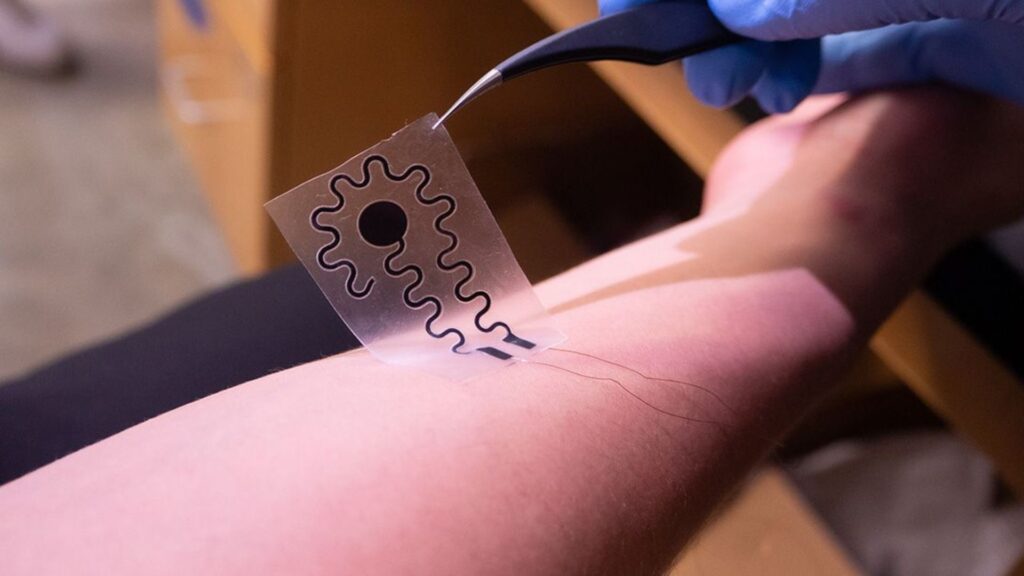A research team at the University of California, San Diego has made a major breakthrough in the field of tactile technology.
They have developed innovative electronic devices that can replicate the sensations of pressure and vibration on the skin without causing discomfort.
Virtual reality, prosthetics and wearable technology can help provide a more immersive experience.
Innovative design and functionality
The device consists of soft, stretchy electrodes connected to a silicone patch that can be applied to the skin like a sticker. These electrodes, which are in direct contact with the skin, are then connected to an external power source.
The electrode design is optimized for flexibility and targeted stimulation. It is laser cut into a spring-like concentric pattern that expands and contracts to accommodate the movements of the body. This ensures optimal elasticity and targeted current delivery, effectively preventing pain for the wearer.
By applying a small electrical current to the skin, the device can mimic a range of tactile sensations, from subtle pressure to pronounced vibrations. The frequency of the electrical signal determines whether the user feels the pressure or vibration.
The device features a unique electrode design: existing haptic technologies often use rigid metal electrodes that have poor skin conformance and can deliver uneven electrical current, causing discomfort or pain.
Meanwhile, the new electrodes are made from a soft, stretchy polymer that fits seamlessly against the skin, eliminating air gaps and ensuring a constant, comfortable flow of current.
The device is made from a new polymer material that is a proprietary blend of two well-known polymers: PEDOT:PSS, which is highly conductive but inherently rigid, and PPEGMEA, which is flexible and stretchable but not conductive.
“By optimizing these ratios, [polymer building blocks]”We molecularly engineered a material that is both conductive and stretchable,” said Rachel Blau, co-author of the study.
Discoveries and promising applications
Notably, the researchers tested 10 subjects with the device attached to their forearms. Working with behavioral scientists and psychologists at the University of Amsterdam, they identified the lowest detectable current level and tweaked the frequency to elicit different tactile sensations, which could be categorized as pressure or vibration.
“We found that when we increased the frequency, participants felt the vibration more strongly than the pressure,” said Abdulhameed Abdal, a doctoral student at the University of California, San Diego, and the study's other co-first author.
“This is interesting because, biophysically, we didn't know until now exactly how electrical currents are sensed by the skin.”
These new insights could pave the way for the development of advanced haptic devices with applications in a variety of fields, including virtual reality, medical prosthetics, and wearable technology. In virtual reality, haptic feedback allows users to feel objects in the virtual world, creating a more immersive experience.
In prosthetics, haptic devices can help users regain some of their lost sense of touch, and in wearable technology, haptic feedback offers new ways to interact with devices.
Although further research and development is needed, this innovation represents a major step forward in haptic technology.
About the Editor
Aman Tripathi An active and versatile journalist and news editor, covering regular and breaking news for many leading publications and news outlets including The Hindu, Economic Times, Tomorrow Makers etc. Aman has expertise in politics, travel and technology news, especially AI, advanced algorithms and blockchain, with an intense curiosity for all things science and technology.

